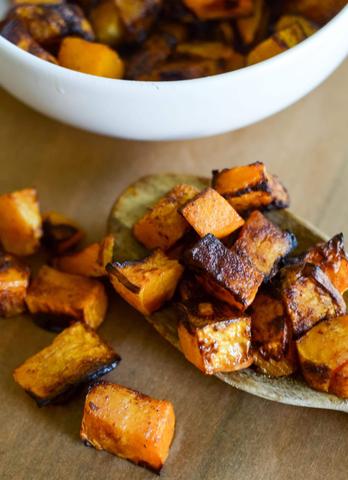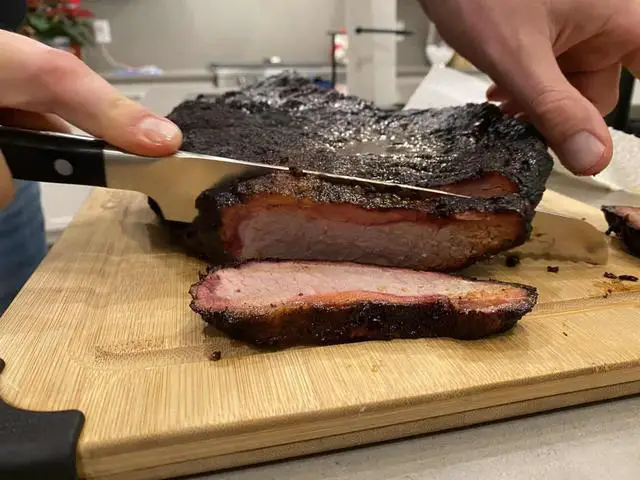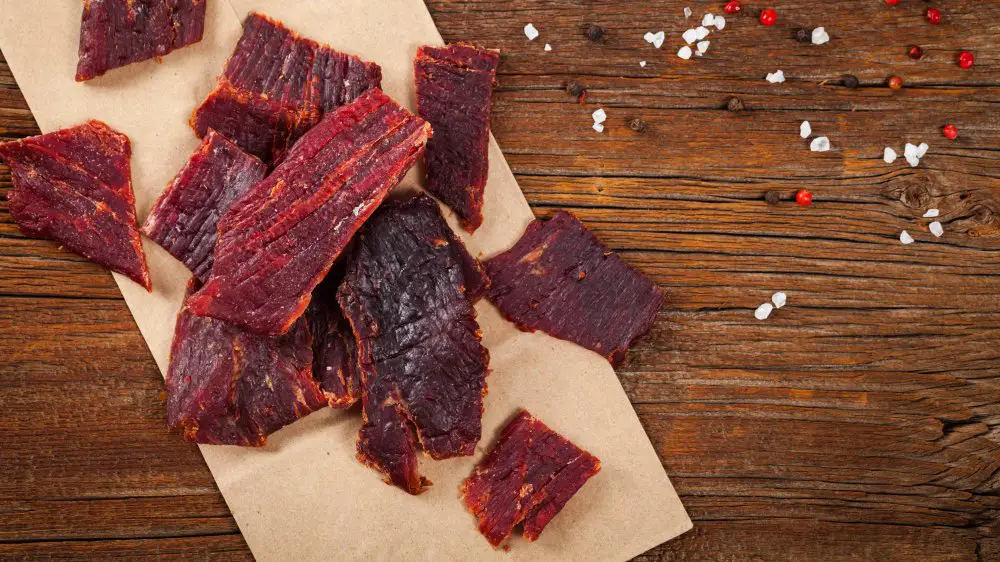
“Unlock the Secret to Perfectly Seasoned Jerky with our Curing Salt: Elevate your jerky game to new heights with our specially crafted curing salt. Discover the key to achieving irresistible flavors and long-lasting preservation for your homemade jerky. Delight friends and family with every bite, as this premium seasoning ensures a delicious and safe snacking experience. Take your jerky-making skills to the next level today!”
Beef Jerky Cure: Is Curing Salt Necessary?
Curing salt, also known as beef jerky cure, is a commonly debated topic among beef jerky enthusiasts. It is used to extend the shelf life of jerky and prevent the growth of harmful bacteria like Clostridium botulinum. There are two main types of curing salts, Curing Salt #1 and Curing Salt #2, which contain different percentages of sodium nitrite and sodium chloride.
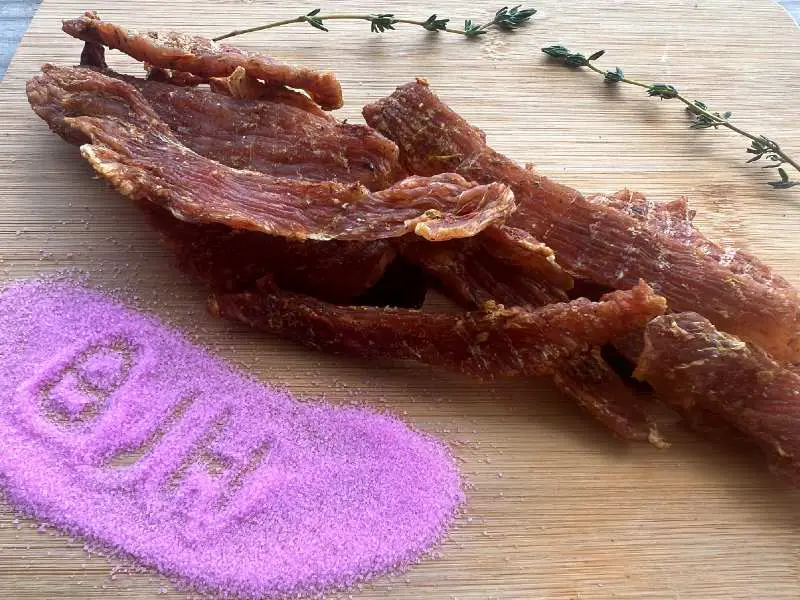
Sodium nitrite, found in Curing Salt #1, acts as an antimicrobial agent and antioxidant, ensuring shelf stability and color retention. Sodium nitrate (#2) is typically used for dry curing meats like salami and sausage. These curing agents work by osmosis and diffusion, drawing moisture out of the meat and creating an unfavorable environment for bacterial growth.
While it is important to follow the instructions on your curing package to avoid consuming excessive amounts of nitrates and nitrites, it’s also crucial to measure the correct quantities of cure based on the amount of meat you’re working with. Investing in an accurate scale can help ensure precise measurements. Additionally, salt plays a vital role in curing jerky by acting as a preserving agent and enhancing flavor.
What is “Jerky Cure”?
“Jerky cure” refers to the use of curing salts, specifically Curing Salt #1 and Curing Salt #2, in the process of making beef jerky. These curing salts contain sodium nitrite and sodium nitrate, which help with shelf life and inhibit the growth of bacteria in jerky. Sodium nitrite acts as an antimicrobial agent and antioxidant, while sodium nitrate is used for dry-curing over a longer period of time. The purpose of using these salts is to increase the stability and color of the jerky by reducing water activity and preventing bacterial growth.
It’s important to note that consuming excessive amounts of nitrates and nitrites can be toxic. Therefore, it’s crucial to follow the instructions on your curing package and measure the correct quantities of cure based on the amount of meat you’re working with. Investing in an accurate scale is recommended for precise measurements. Pink curing salt, which contains curing agents, is dyed pink to distinguish it from regular salt.
What Does Curing Salt Do for Jerky?
Curing salt, also known as pink curing salt or Prague powder, serves several important functions in the process of making jerky. Firstly, it helps to extend the shelf life of the jerky by inhibiting the growth of bacteria, particularly Clostridium botulinum which can cause food poisoning. The sodium nitrite present in curing salt acts as an antimicrobial agent and antioxidant, promoting shelf stability and color retention.
In addition to its antimicrobial properties, curing salt also contributes to the flavor and texture of the jerky. It aids in moisture retention, preventing the jerky from becoming dry and tough. The use of curing salt provides a distinct cured flavor that is characteristic of traditional jerky.
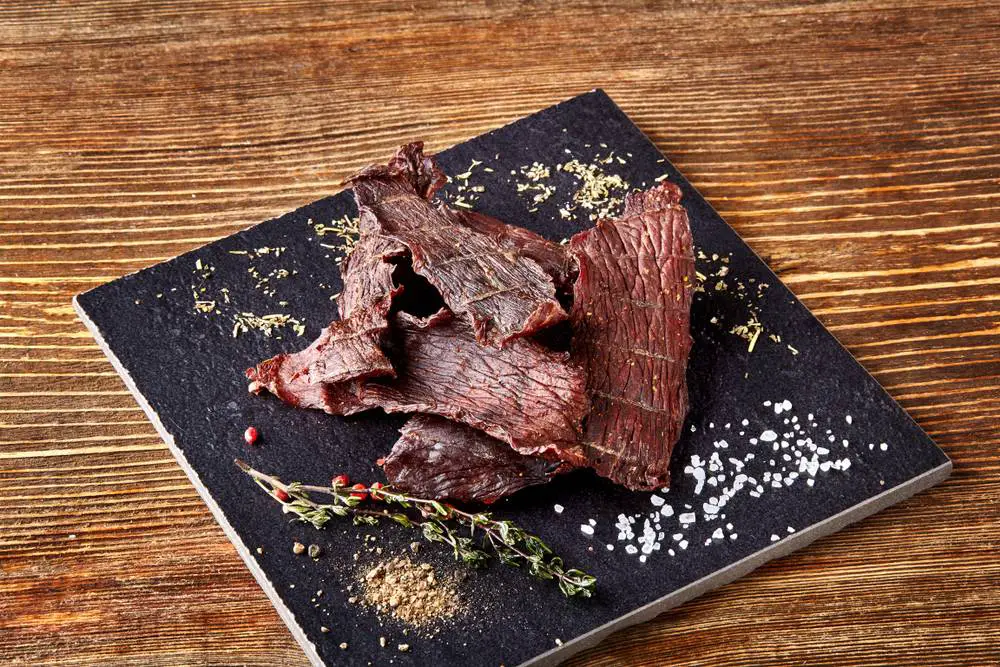
How to Use Curing Salt With Jerky
When using curing salt with jerky, it is important to follow the instructions on your curing package. Nitrites and nitrates can be toxic when consumed in excess, so measuring the correct quantities of cure is crucial. Investing in an accurate scale that measures to 0.1g is recommended for precise measurements.
Curing salt #1, which contains 6.25% sodium nitrite and 93.75% sodium chloride, is commonly used for jerky as it requires cooking. Curing salt #2, on the other hand, contains 6.25% sodium nitrite, 4% sodium nitrate, and 89.75% sodium chloride and is used for dry-curing over an extended period of time.
To calculate the amount of cure needed based on the weight of your meat, you can use a simple equation: Y = (X/25) * 1 oz of Cure #1 per pound of meat. X represents the weight of the beef in pounds and Y represents the amount of jerky cure in grams.
Breaking Down How Much Curing Salt to Use
Breaking down how much curing salt to use is crucial in ensuring the safety and quality of your beef jerky. There are two main types of curing salt that people use: Curing Salt #1 and Curing Salt #2. Curing Salt #1 contains 6.25% sodium nitrite and 93.75% sodium chloride, while Curing Salt #2 contains 6.25% sodium nitrite, 4% sodium nitrate, and 89.75% sodium chloride.
The purpose of using nitrites and nitrates in jerky is to help with shelf life and inhibit the growth of anaerobic bacteria like Clostridium botulinum. Sodium nitrite acts as an antimicrobial agent and antioxidant, improving both the shelf stability and color stability of the jerky.
It’s important to measure the correct quantities of cure based on the amount of meat you’re working with. Investing in a scale that is accurate to 0.1g is highly recommended for accurate measurements. The recommended ratio for Cure #1 is 1 oz per 25 lbs of meat, but most home jerky makers work with smaller batches ranging from 1-5 lbs.
To calculate the amount of curing salt to use, you can use a simple equation where X represents the weight of the beef and Y represents the cure output in grams. For example, if you have 3 lbs of beef, you would weigh out 3.4g of InstaCure #1.
It’s also important to note that curing salts are dyed pink (Red #3) to differentiate them from regular salt. Pink curing salt is not the same as pink Himalayan sea salt.
In addition to curing salt, salt plays a crucial role in jerky making as it functions as a natural preservative by decreasing water activity and inhibiting microbial growth. The ratio for equilibrium brining typically involves using around 2.25-2.5% salinity and adding sugar to balance out the saltiness.
While curing salts can extend the shelf life of jerky, they are not required by the USDA. Many brands, like Savage Jerky co., advertise their products as nitrate-free or nitrite-free, but they use other methods like salt and organic acids for preservation.
Ultimately, whether or not you choose to use a curing salt depends on your preference and intended shelf life of the jerky. If you plan to consume your jerky within a few days, a cure may not be necessary. However, if you want your jerky to last longer and have increased shelf stability, using a curing salt is recommended.

Salt-based Ingredients and Organic Acids
When it comes to making beef jerky, salt plays a crucial role in the curing process. Salt acts as a curing agent by reducing water activity, which inhibits the growth of bacteria and helps prolong the shelf life of the jerky. It also enhances the flavor and acts as a preservative. Most jerky recipes call for specific amounts of salt to ensure proper curing.
In addition to salt, organic acids are often used in jerky marinades. These acids, such as vinegar, citric acid, or ascorbic acid (vitamin C), not only add flavor but also help inhibit microbial growth. They act as natural preservatives and contribute to the overall quality and safety of the jerky.
Calculating Salt to Water Ratio for Beef Jerky
When making beef jerky, it’s important to calculate the correct salt to water ratio for curing. This ratio helps to ensure the safety and quality of the jerky. One common method is to use a salinity percentage of 2.25-2.5%. To calculate the salt content, multiply this percentage by the total weight of the meat and water used.
For example, if your meat weighed 1000 grams and you wanted a salinity percentage of 2.5%, you would use 2.5% * 1400g = 35g of salt. Additionally, you can add sugar to help balance out the saltiness, typically using 1% of the total weight (e.g., 14g cane sugar in this case).
Other sugars like maple syrup, molasses, and honey can also be added as humectants to bind moisture inside the jerky while keeping water activity low.
It’s worth noting that while curing salts can extend shelf-life and inhibit bacterial growth, they are not required by the USDA for making jerky. The jerky industry is heavily regulated, so whether or not you choose to use a cure depends on your desired shelf-life and personal preference.
Overall, calculating the salt to water ratio is crucial for achieving a safe and flavorful beef jerky.
Beef Jerky Cure Isn’t Required by the USDA
Contrary to popular belief, the use of a beef jerky cure or curing salt is not required by the USDA. While many people discuss and debate the use of these curing agents in beef jerky, it is important to note that they are not mandatory ingredients. The USDA regulates the jerky industry and allows for both cured and uncured products to be sold as long as they meet certain safety standards.
Products that are labeled as “U.S. Inspected and Passed by Department of Agriculture” have undergone rigorous inspections and meet the necessary food safety requirements. This means that both cured and uncured jerky can be sold legally in the market. Therefore, whether or not you choose to use a beef jerky cure is a personal preference and depends on your desired shelf life for your homemade jerky.
Pro-tip In Regards to USDA Labels on Commercial Jerky Bags
When purchasing commercial jerky, it is important to pay attention to the labels and certifications provided by the USDA. The USDA and FSIS heavily regulate the jerky industry, ensuring that products are inspected and meet safety standards. Look for the label “U.S. Inspected and Passed by Department of Agriculture” to ensure that the jerky has undergone proper inspection.
While some brands may advertise their products as “nitrate-free” or “preservative-free,” it is important to note that these claims do not necessarily mean that a cure or preservatives are not used. These brands often use alternative ingredients such as organic acids or salt to achieve preservation and flavor enhancement. Always read the ingredients list carefully to understand what is used in the jerky.
If you prefer your jerky to have a longer shelf life, it is recommended to choose products that use curing salts like sodium nitrite or sodium nitrate. These additives help inhibit bacterial growth, extend shelf stability, and improve color retention in the jerky. However, if you plan on consuming your jerky within a few days and do not prioritize an extended shelf life, then a cure may not be necessary for you.
In conclusion, curing salt is an essential ingredient in making jerky as it not only enhances flavor but also ensures safety by inhibiting bacterial growth. Its unique blend of sodium nitrate and salt helps preserve the meat and gives it a longer shelf life. However, due to its high sodium content, it should be used sparingly and with caution.
Learn More About Grilling
If you want to learn more about grilling, check out these other helpful resources!

